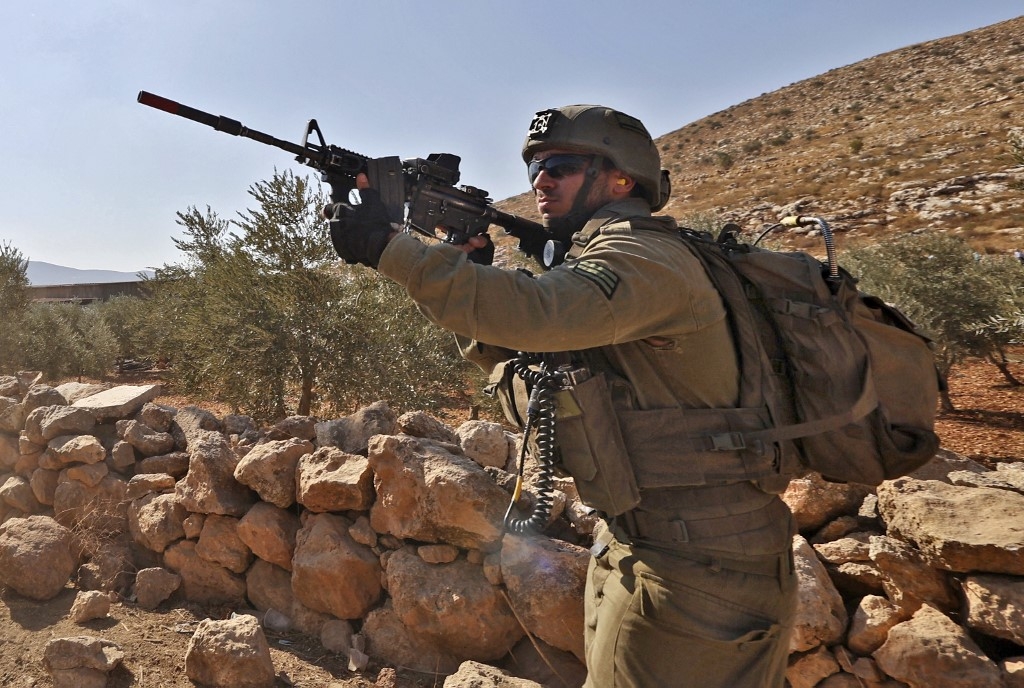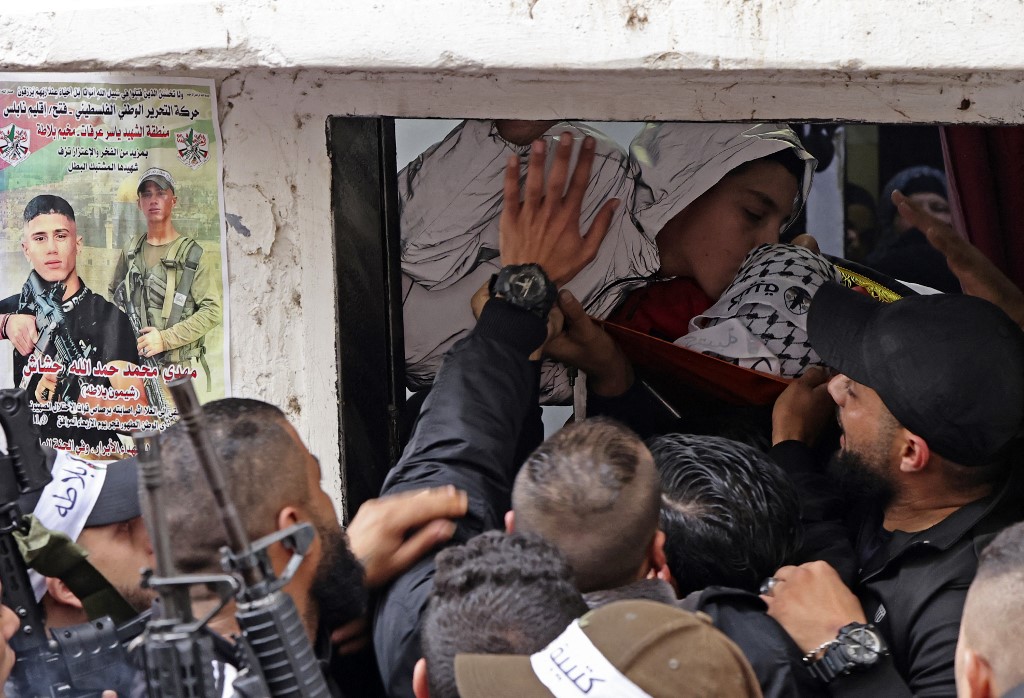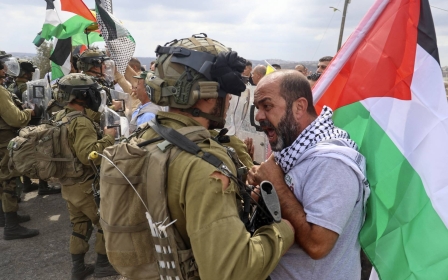Palestinian teen killed after Nablus tomb incursion by Israeli politicians

A Palestinian youth was killed early on Wednesday during an army-protected incursion by far-right Israeli lawmakers at a religious site in Nablus in the occupied West Bank, hours before another Palestinian man was shot dead near Jenin.
Mahdi Mohammad Hashash, 15, died in a Nablus hospital after shrapnel hit his body during armed clashes that erupted in the vicinity of Joseph’s Tomb, following the arrival of Israeli forces in the area, according to the Palestinian Ministry of Health.
Three more were wounded by rubber-coated steel bullets and dozens were injured after inhaling tear gas.
It was not immediately clear if Hashash died from Israeli gunshot wounds or an explosive device he was reportedly carrying.
New MEE newsletter: Jerusalem Dispatch
Sign up to get the latest insights and analysis on Israel-Palestine, alongside Turkey Unpacked and other MEE newsletters
Fatah, the Palestinian liberation movement, said Hashash was a member of the group’s armed wing, the Al-Aqsa Martyrs Brigades, and was killed by Israeli fire.
The Israeli army said it fired towards a person who “placed a bomb in the area” and that a “hit was identified”.
Later in the day, Israeli forces shot dead 29-year-old Rafaat Ali Abdallah Issah near the separation wall west of Jenin, the Palestinian health ministry said.
Israeli MPs meet in Nablus shrine
The violence in Nablus began when Israeli forces entered the area with armoured vehicles in the early hours of Wednesday to escort outgoing and incoming right-wing MPs to Joseph’s Tomb.
The religious site has long been a flashpoint due to regular tours by army-protected settlers, which Palestinian residents contest.
Palestinians and Israelis lay claim to counter-narratives about the site’s religious and national significance. Palestinians believe it is the burial site of a cleric who lived in the nearby Balata neighbourhood in the early 1900s.
Israelis say the shrine contains the tomb of the Prophet Joseph, a figure revered in both Islamic and Jewish traditions.
The Wednesday tour was arranged for members of the far-right Religious Zionism alliance, the ultra-Orthodox Shas party and Benjamin Netanyahu’s Likud.
The three parties will likely be part of a future government coalition that includes prominent far-right leaders such as Itamar Ben-Gvir and Bezalel Smotrich, who advocate for more Israeli settlements in the West Bank and oppose Palestinian statehood.
The tomb visit was part of a political event and was approved by the Israeli army division commander, the newspaper Haaretz reported.
Armed clashes erupted between Nablus-based Palestinian armed groups and Israeli forces during the incursion.
The Lions’ Den group said on Telegram that it had joined the fighting alongside the Balata Brigade, the latest armed group to be formed in the city.
Issah's shooting takes the current death toll of Palestinians killed by Israeli forces and settlers in the West Bank this year to 137, including at least 30 children.
It has been the deadliest year for Palestinians in the West Bank on a monthly average since 2005, according to the UN.
In the same period, at least 22 Israelis have been killed by Palestinians in various attacks, five of them shot dead in the occupied West Bank.
Middle East Eye delivers independent and unrivalled coverage and analysis of the Middle East, North Africa and beyond. To learn more about republishing this content and the associated fees, please fill out this form. More about MEE can be found here.





